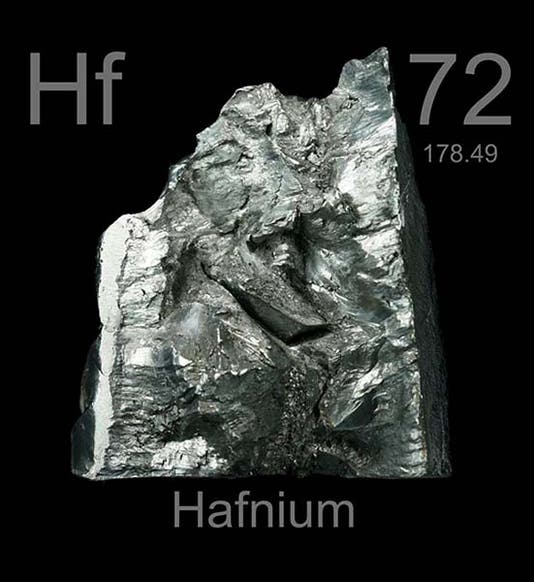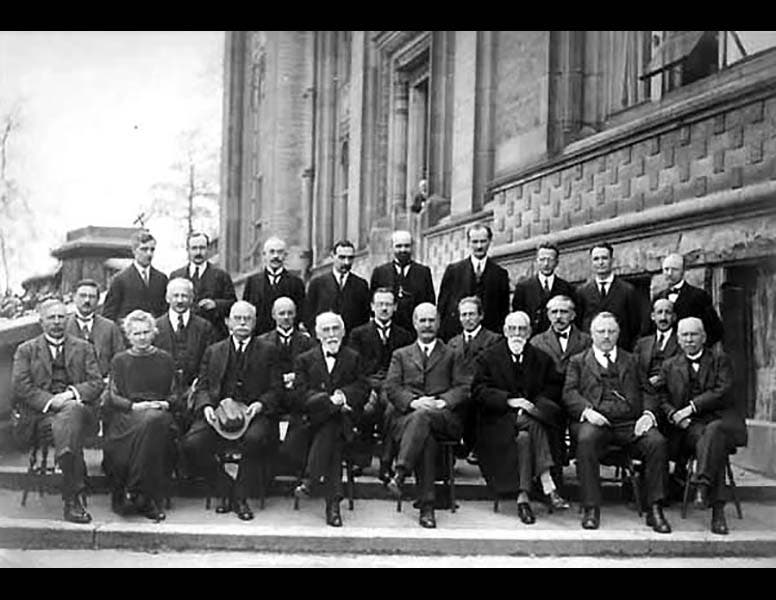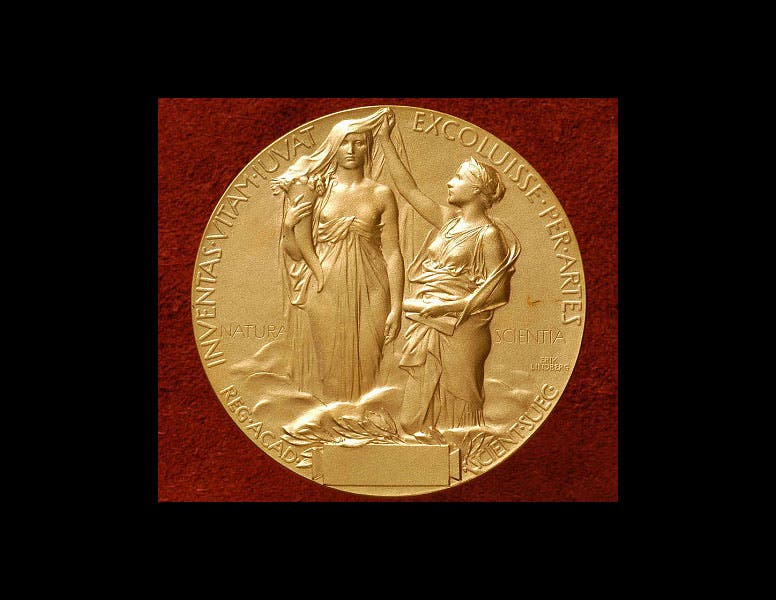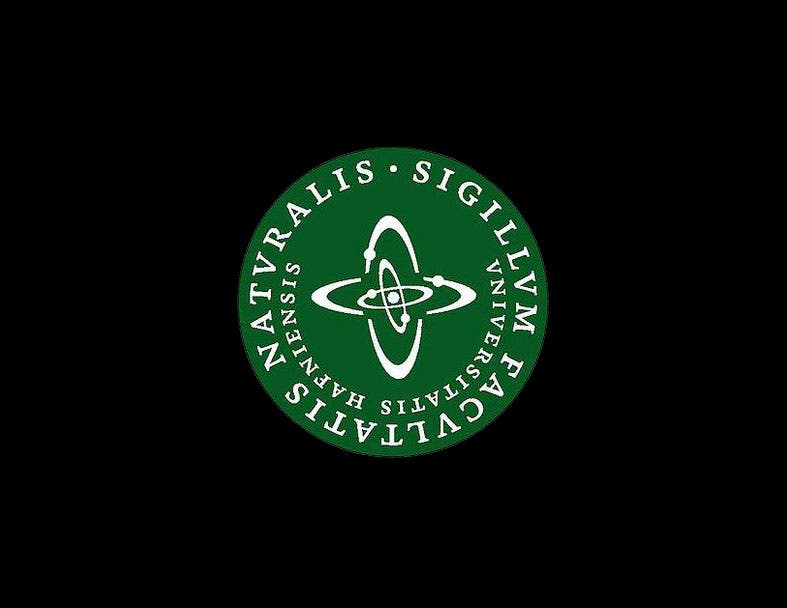Scientist of the Day - George de Hevesy
George de Hevesy, a Hungarian chemist, was born Aug. 1, 1885 (second image). Hevesy, working with Dirk Coster, discovered the element hafnium in 1923, which would fill in one of the "holes" in Mendeleev's periodic table. When Mendeleev constructed his original table in 1869, there were several gaps in the arrangement, where there should be elements of a certain atomic number, but none were known. Three of these were quickly occupied, with the discovery of gallium, scandium, and germanium coming within 15 years, but the hole at number 72 took a while longer, until Hevesy and Coster found their new element (first image). Hafnium was the next-to-last naturally occurring element to be isolated (rhenium would be discovered two years later and complete the natural periodic table).
Since they were working at Niels Bohr's Institute in Copenhagen when they isolated their new element, Hevesy and Coster chose to name it after Hafnia, the Latin term for Denmark. For their work, the two men shared the Nobel Prize for Chemistry in 1943. In a photograph of the participants at the Fourth Solvay conference in Brussels in 1924, one year after the discovery, Hevesy is in the second row at the far right (third image). At the time, he was not nearly as famous as Ernest Rutherford and Marie Curie, who occupy the two seats at the left of the front row.
Hevesy is best known, not for his own Nobel medal, but for what he did to preserve two others. After Hitler came to power, two German Nobel laureates, James Franck and Max von Laue, sent their gold medals to Bohr for safekeeping in Denmark. This was quite illegal, as the Nazis had stipulated that no gold could leave the country. When Hitler invaded Denmark in 1940, there was concern that the Institute would be searched, the medals discovered and confiscated, and von Laue imprisoned (Franck had already fled to the US). Bohr thought about burying the medals on the grounds, but he feared they might be uncovered. Then Hevesy had an idea--an idea befitting a chemist. Gold is impervious to most chemicals, but it can be dissolved by aqua regia, a nasty combination of two acids, nitric acid and hydrochloric acid. So Hevesy got a big flask, filled it with aqua regia, and then slowly dissolved both medals in the foul brew. This took some time, as a Nobel medal is 2 1/2 inches across and weighs a little over 7 ounces. But when he was done, he had a beaker filled with a clear orange solution, and he put it out in the open on a shelf in his Institute lab and just left it there, for anyone to see, but few to comprehend.
Hevesy himself fled Copenhagen after Denmark fell to the Nazis, but when he returned after the war, the flask was still there, untouched and undetected. So he precipitated out the gold and sent it off to Stockholm. The Nobel authorities recast both medals from the original gold, and von Laue was re-presented his medal in 1950. Franck received his reminted medal at a ceremony in Chicago in 1952. The image shows the reverse of the medal for Physics and Chemistry, with a blank space at the bottom where the names would be engraved (fourth image).
The University of Copenhagen is very proud of having an element named after its home country, and the seal of the Faculty of Science has a stylized image of a hafnium atom at its center (fifth image).
Dr. William B. Ashworth, Jr., Consultant for the History of Science, Linda Hall Library and Associate Professor, Department of History, University of Missouri-Kansas City. Comments or corrections are welcome; please direct to ashworthw@umkc.edu.











